Designers: Matthew Boehm, Michael Bradley, and Jason Cooper
Client Coordinator: Dr. Be Na Lee, UNC Physical Medicine and Rehabilitation
INTRODUCTION
Fibromyalgia is a disorder involving widespread musculoskeletal pain, which may also cause fatigue, sleep, memory, and mood issues [1]. Although there isn’t much research available as to why fibromyalgia occurs, it is believed that the disorder amplifies painful muscle sensations by affecting the way in which the brain perceives pain signals. Fibromyalgia may be caused by either a singular event involving significant stress or physical trauma, or by the long-term accumulation of symptoms.
Our client is a middle-aged woman who has symptoms that are consistent with fibromyalgia in her lower back, upper back, and shoulders. She used to be an employee of the US Postal Service, and thus had to undergo repetitive strenuous motion to her legs and back for many years. She had to leave the job back in 2006, when a series of back injuries (first her lower back, and later her upper back) prevented her from delivering mail. These injuries, in conjunction with her daily chores that involve bending, have caused major back pain for the client, to the point that she has difficulty sleeping. Additionally, the client’s current profession involves driving cars to and from car dealerships in other counties. This profession causes her to have to sit still for long periods of time, as well as walk fairly long distances to cars. Both of these activities cause her to experience pain and discomfort in her legs and back.
Currently, the only treatment for fibromyalgia is muscle massaging. Although there are several forms of muscle massagers on the market, such as massage chairs, hand-held massagers, and even a simple tennis ball massage method, these methods are either inconvenient for the patient or they do not entirely affect the muscle areas of need [2-3]. The client’s current treatment for fibromyalgia involves dancing and doing exercise to warm up her muscles after waking up, followed by back and leg stretches. This method keeps her muscles feeling limber until she begins to do repetitive strenuous tasks, such as washing dishes or walking long distances. Her best solution is using her Whirlpool Jacuzzi, which gives her the most even and comfortable massaging experience. However, it is inconvenient for the client to be using the Whirlpool several times per day, so a more portable yet equally effective solution was necessary.
The client needs a portable massaging solution that can reach the problematic areas of her back. Thus, the goal is to design a device that can be used comfortably and without excessive reaching, all while maintaining mechanical durability and minimizing device weight.
TECHNICAL DESCRIPTION
To accomplish our goal, we created a device that consists of an ergonomic frame with massaging attachments, which allows the user to manipulate the attachment from the front of the body. The user holds the device around his/her back, holding both handles in front of his/her body. They can then position the attachment against the problematic area and apply pressure or other necessary motion to relieve pain. The wide design allows the user to reach all areas of the back by adjusting the position of the frame around the body. The attachment mount provides an area for the user to connect and disconnect a variety of massaging attachments quickly and easily to create an assortment of massaging sensations. The device was made into two models: a Standard Model for home use and a Travel Model for greater portability.
- Standard Model Frame
The frame was constructed from a single 6 foot length of 1 inch furniture-grade PVC pipe. PVC was used for its durability, light weight, and availability of standardized connectors. A heat gun was used to soften the pipe in increments and shape the frame according to a stencil drawn on the floor. Use of a stencil allowed for consistent and symmetrical frame construction. Heat shrink rubber grips were added to the handle portion of the frame to increase comfort and handling.
- Travel Model Frame
To create the travel frame, a standard frame was shaped and then cut in half. A 6 inch length of ¾ inch PVC pipe was inserted 3 inches into one half of the frame. This was done by heating up the larger piece until the PVC was flexible enough to allow for the ¾ insert to slide in easily. This left an exposed 3 inches of ¾ PVC acting as a male insert, which plugs into the opposite half to reassemble the frame. Rubber grips were also added to this frame.
- Attachment Mount
In the Standard Model of the device, the attachment mount was created using a ¾ inch x 1 inch PVC threaded snap tee. The tee was attached at the center of the frame back piece with two ¼ inch screws that were inserted in holes through the tee and frame tube. The threaded tee allows for the individual massaging attachments to be connected to the frame.
For the Travel Model the attachment mount served the purpose of securing the two halves of the frame, allowing for collapsibility, and also functioned as the connection point for the various massage attachments. Like in the Standard Model, it was made using a ¾ inch x 1 inch PVC threaded snap tee. The tee was clipped over the joint between the frame halves and was permanently secured on the male end of the frame using a single ¼ inch screw fastened with acorn nuts. When the frame halves are joined, the female end can be secured to the mount using a ¼ inch hitch pin inserted through a hole in the tee, outer tube, and inner tube.
- Massaging Attachments
A variety of attachments were developed to provide the user with a selection of massaging sensations. These attachments included a hard knob, rubber ball, and massage roller ball, which were each fastened to their own threaded ¾ inch PCV plug so that they could be screwed into the threaded tee of the attachment mount.
- The hard knob allows for a hard and small diameter massage. The hard knob is two separate pieces; the first piece is a red insert designed from SolidWorks and then printed from a Makerbot 3D printer, the second piece is a threaded ¾ inch to 1 inch PVC adapter.
- The rubber ball allows for a soft pressure based massage which was formed from half of a lacrosse ball where the user can utilize rocking and rubbing motions to massage.
- The rolling ball allows for a large diameter rolling massage formed from a solid ball (similar to a billiard ball) and a casing which allows the ball to freely roll while the casing stays stationary.
The threaded plug allowed the attachments to be screwed into and out of the attachment mount at the back of the frame. An acrylic baseplate, which was created to fit the octagonal head of the PVC plug, was fastened to the bottom of each attachment to prevent them from rotating around the center fastener.
REFERENCES:
[1] Mayo Clinic Staff. “Fibromyalgia.” Internet: http://www.mayoclinic.com/health/fibromyalgia/DS00079, Jan. 22, 2011 [Nov. 19, 2013].
[2] “Help Yourself Tennis Ball Self Massage.” Internet: http://help-yourself-techniques.blogspot.com/p/tennis-ball-self-massage.html, [Nov. 19, 2013].
[3] “Back Nodger.” Internet: http://www.backnodger.com/, [Nov. 19, 2013].

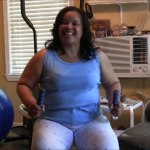
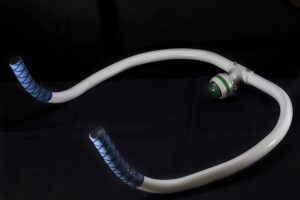
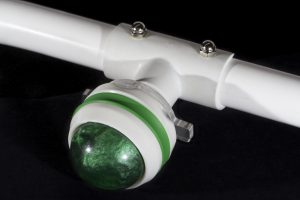
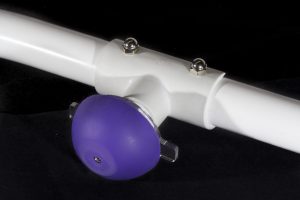
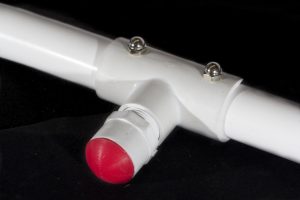
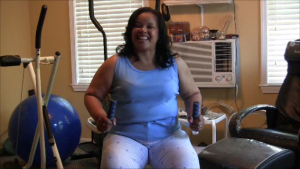
University Operator: (919) 962-2211 | © 2024 The University of North Carolina at Chapel Hill |